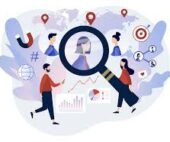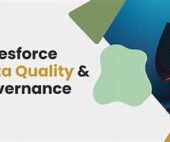Salesforce: Enabling Customer Experiences Through Integrated Solutions
Salesforce is a cloud-based CRM platform offering software, services, and applications designed to create valuable customer experiences. It integrates various organizational departments such as marketing, sales, and services, providing a unified view of the customer. Salesforce Envision is a digital transformation engagement.
This insight outlines a typical customer’s journey through a Salesforce Envision Advisory engagement with the Tectonic team. We will highlight three key areas that contribute to a powerful and successful Envision engagement:
- Outcome-Driven Focus
- Collaboration with the Customer
- Planning for Success
Outcome-Driven Focus
The cornerstone of any Salesforce Envision Advisory engagement is an upfront and honest conversation with the customer about their future business aspirations. Establishing desired outcomes and understanding how customers should perceive the business are critical. This focus is about envisioning future possibilities rather than dwelling on current systems.
Collaboration with the Customer
Alignment between the customer and the consulting team is essential. Success hinges on ensuring all organizational groups are aligned, as individual great ideas often fail without collective buy-in. Effective collaboration can prevent projects from delivering minimal benefits and adding redundant systems.
Planning for Success
Understanding customer goals and desired outcomes allows building on existing efforts within business and IT departments. This understanding helps create a roadmap for business transformation, enabling the customer to serve their customers better, achieve efficiencies, and scale for future growth.
Every stakeholder must participate in creating this roadmap, aligning with organizational leadership. This roadmap is not merely a technology rollout plan but a capabilities roadmap to meet business outcomes. Business processes and existing IT systems must be analyzed and re-architected for successful execution.
What is Salesforce Envision?
Salesforce Envision is a design-led engagement enabling organizations to undergo digital transformation to unlock customer insights, build actionable roadmaps, and develop successful solutions. The principles guiding Salesforce Envision include:
- Aligning critical business and IT stakeholders.
- Collaboratively creating and validating solutions through proof-of-concept demonstrations.
Envision engagements are typically co-led by a Salesforce Senior Business Architect and a Senior Salesforce Technical Architect to provide guidance and ensure customer alignment. A seasoned Salesforce Solutions Architect leads the Envision discovery process to ensure no stone is left unturned.
Typical Phases of an Envision Engagement:
- The News Conference Exercise Key stakeholders from business and IT groups participate in “20-Minute News Conference” sessions. These sessions challenge participants to think about future outcomes and articulate their vision of unparalleled success. This exercise encourages creativity and innovation, providing insights into major themes driving organizational success.
- Current State Discovery In-depth discovery sessions focus on existing business processes, with consultations from subject matter experts (SMEs) and stakeholders. The sessions include “white-board” activities and “shadowing” key personas to document end-to-end business processes and the current technical landscape. A key focus lies in Tectonic hearing your current state weaknesses and charting future state success.
- Future State Enterprise Vision Workshops target the future state of the business, discussing future-state business processes and platform landscapes. Outputs include future-state business and technical requirements aligned with desired outcomes.
- Gap Analysis & Alignment A gap analysis compares findings from various stages to identify actions required to achieve key business outcomes. This involves interactive workshops using lateral thinking and design thinking techniques to generate ideas for harmonized business processes and technical landscapes.
- Salesforce Platform Demonstrations Proof of concept (POC) scenarios demonstrate the potential of Salesforce. These demonstrations gather feedback from business and technical teams, providing a foundation for developing a future-state roadmap and strategy.
- Future State Roadmap A phased roadmap identifies business themes and activities required for the future Salesforce platform. This roadmap covers all business functions from marketing to support, ensuring a structured approach to digital transformation.
- Future State Strategy Workshops identify and list business capabilities under different themes. The future-state strategy includes options such as retaining legacy systems, integrating Salesforce with legacy systems, and leveraging Salesforce features to replace shadow IT systems.
The future-state capability matrix, developed from these strategies, identifies IT systems to be decommissioned, contributing to cost and maintenance benefits and supporting a solid business case. This elimination of technical debt can fully offset the long-term costs with the investment in your future success.
Final Executive Brief
The Envision engagement concludes with an executive brief for business and IT stakeholders, covering:
- Overall problem statement with challenges and impacts.
- Current-state business and IT engagement model.
- Proposed future-state business and IT architecture.
- Salesforce demonstration snapshots.
- Business capabilities matrix.
- Phased roadmap with multiple releases.
- Proposed team structure for project execution.
- Key roles and responsibilities.
- Implementation and governance methodology.
By following these steps, organizations can effectively leverage Salesforce Envision to achieve their digital transformation goals.













